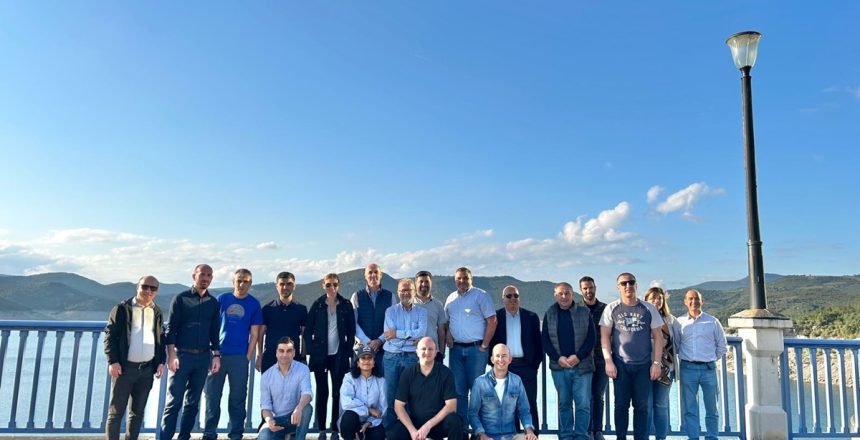The facility, a strategic reference point for the region, has attracted the attention of these international agents due to its innovative management of a scarce resource such as water. The foreign delegations visiting Navarre also valued the positive impact it has had on the development of the agri-food industry, one of the main drivers of development and wealth in the region. For this reason, they were particularly interested in learning about the economic and environmental advantages provided by the Navarra Canal with the aim of being able to transfer this success story to their respective territories at a later date.
On the first day of the visit, the deputy director of the public company INTIA and director of Riegos de Navarra, Joaquín Puig, showed the ten Georgian representatives, as well as four members of the World Bank, the Ega 3 Sector (Sesma), the Ega 4 Sector (Cárcar), the control centre of the Navarra Canal in Artajona and the Itoiz dam. Puig told them that ‘the idea we conveyed to them is the variety of crops planted and the compatibility of digitised irrigation areas with areas of environmental protection, within the framework of public-private collaboration’.
During the second day of the visit, the foreign representatives participated in various technical presentations and debates to learn about the magnitude of the Navarre Canal. The Department of Territorial Cohesion’s officials then explained to them ‘the economic advantages of the Canal and the importance of its contribution to the development and cohesion of the territory, as well as the shielding it provides to the Autonomous Community in the face of climate change’.
Georgia is not the only country that has taken notice of the advantages and solvency of the Navarre Canal. Currently, the Government of Ukraine, in collaboration with the World Bank, is developing a strategy to establish irrigation infrastructure operators in its territory that, to a large extent, is ‘inspired’ by the success story that Navarre represents. Thus, an online meeting was held, which included, among other authorities, the Ukrainian Minister of Agricultural Policy and Food. The organised presentations focused on ‘Lessons learned from institutional agreements in Navarra. The experience of the Navarra Canal’ and “Legal and regulatory context for irrigation operators in Ukraine”.
In another previous meeting, eleven senior officials from the Ministry of Agriculture of the Republic of Malawi, also visited the Navarra Canal to see first-hand what they defined as a ‘world reference’ for its efficiency, both hydraulic and energy, as well as ‘its high degree of digitisation’.
After the international interest aroused by the Navarre Canal, the Department of Territorial Cohesion insisted ‘on the need for this infrastructure for territorial balance. Water will be a scarce and essential resource, hence the importance of the project for both the present and the future’.
THE IMPORTANCE OF THE AGRI-FOOD SECTOR
The Navarre Canal, in this sense, is a basic infrastructure that supports, fundamentally, the agri-food industry, one of the main engines for the creation of wealth and employment for the region. Precisely, this strategic sector has an annual turnover of more than 4,500 million euros, of which 1,129 million euros come from the activity generated by the primary sector.
Furthermore, agri-food represents the second largest area of Navarre’s economy, accounting for 5% of the region’s total GDP and 14% of industrial GDP. Navarrese companies cover the entire value chain from the primary sector to the agri-food industry, including the two most important producers of frozen vegetables in Spain (Ultracongelados Virto and Congelados de Navarra), the largest cooperative cereal group (AN Group) and the leading company in Spain in salads and ready-made fresh vegetables (Florette), as well as leading multinationals such as General Mills, Gelagri, Mondelez and Agrozumos. More information on the following link.
Source: navarra.es




